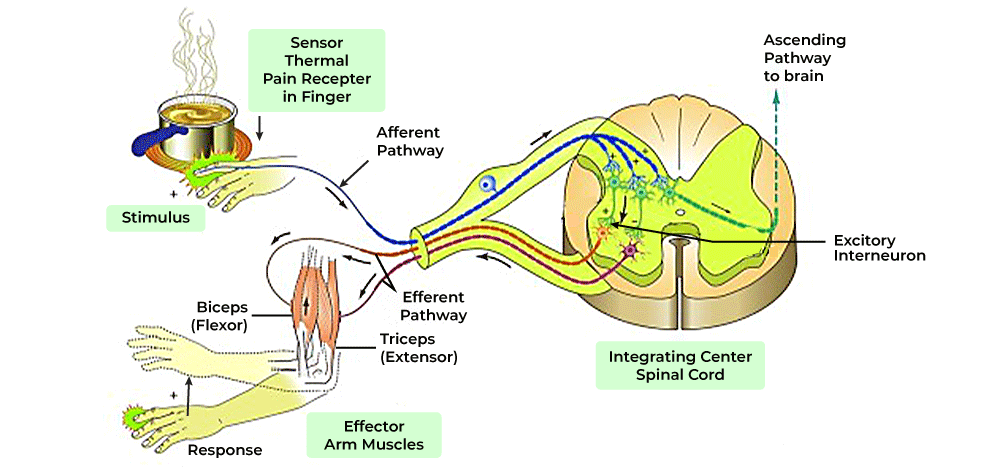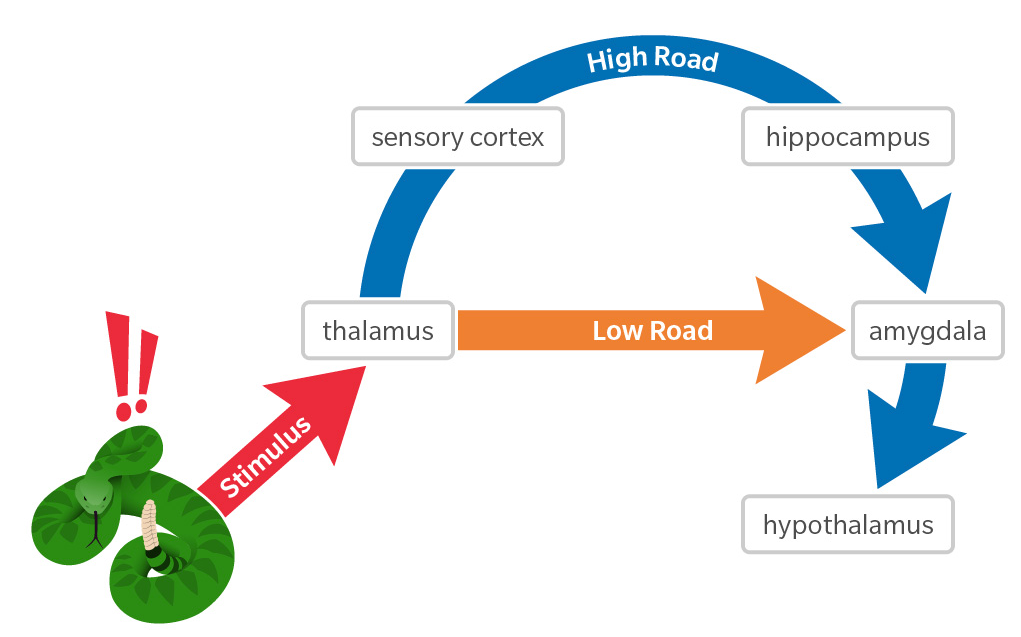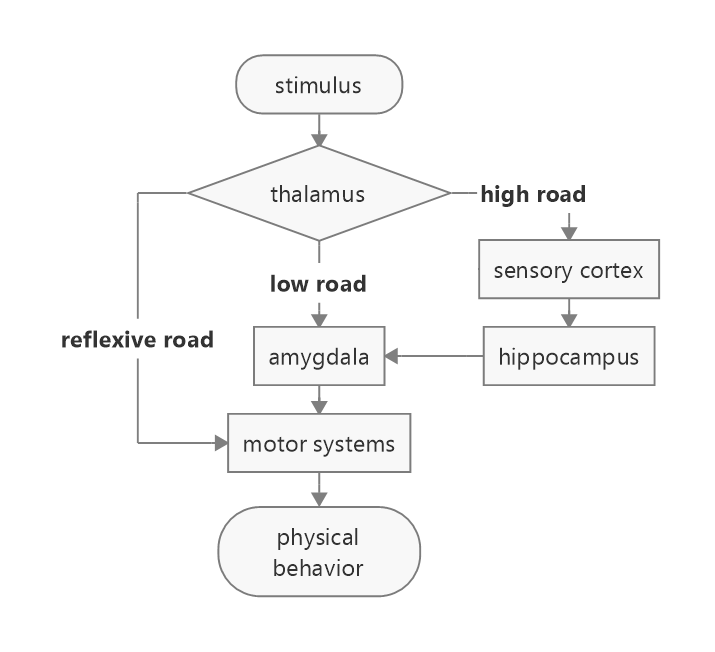The Machinery
The Brain and Behavior – How does it work?
Humans can process stimuli from the environment which lead to behavior in various and very complex manners. Generally speaking there are three distinct pathways in the brain which are utilized in generating behavioral responses from external or internal stimuli:
- Reflexive (“automatic”)response
- Low road (“emotional”) response
- High road (“reflective”) response
A “low road response” and a “reflexive response” share similarities in terms of their quick and automatic nature but are not exactly the same.
- Reflexive response: Reflexes are rapid, involuntary responses to a specific stimulus. They are typically controlled by the spinal cord or lower brain centers, bypassing conscious thought and emotions. A classic example is the knee-jerk reflex that occurs when a doctor taps your knee with a hammer, causing your leg to kick without you consciously or emotionally deciding to do so.

- Low Road Response: This term is often used in the context of emotional and cognitive processes. The “low road” refers to the rapid, automatic, and subconscious processing of stimuli. For example, when you perceive a threat, your brain might initiate a low road response that triggers the fight-or-flight reaction, releasing stress hormones and preparing your body to respond quickly without conscious thought.

- High road response: This reponse is on the other hand much slower than the reflexive road response and the low road response. This pathway allows for more complex, nuanced and reflective understanding of the stimulus and can lead to a more controlled and reasoned emotional response

While both low road responses and reflexive responses share the characteristic of quick, automatic reactions, there are differences in their underlying mechanisms and the types of stimuli they respond to. Low road responses are often more complex and can involve emotional and cognitive processing, whereas reflexive responses are usually simple, stereotypical actions triggered by a specific sensory input. In reflexive responses (such as the knee-jerk reflex) the amygdala is not typically immediately involved. Reflexes are primarily controlled by lower-level neural circuits in the spinal cord or brain stem. These reflex arcs are hardwired and do not directly involve conscious thought or higher-level brain regions like the amygdala and consequential emotions.
Therefore we have to distinguish emotions from reflexes. According to Lazarus (1991, p. 53): “Startle is a good example of the distinction between reflexes and emotions. Some writers have treated startle as a primitive emotion. I believe this is a mistake, because it confuses emotion with reflexes. Startle is relatively fixed and rigid and is best regarded as a sensorimotor reflex” (Lazarus, 1991, p.53). According to this view emotions are complex interactions.
The mechanisms leading to which road is taken
All things simplified, the reflexive response can be considered as an automatic response, the low road response can be considered as an emotional response and the high road response can be consider as a reflective and reasoned response. This does not mean that a certain stimuli will only follow one particular path. It is likely that multiple paths can be followed and interact in more or less the same time. However that depends on the urgency of stimuli and is decided by the thalamus. In our scope of research, the reflexive response is least interesting in the investigation of human behavior patterns. Therefore, we focus primarily on the distinction between low road response and the high road response.